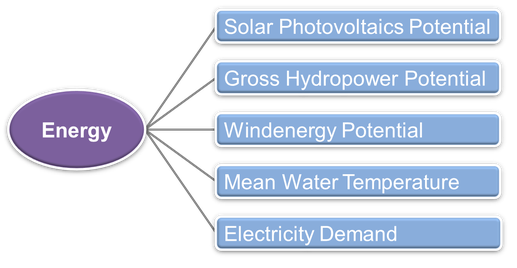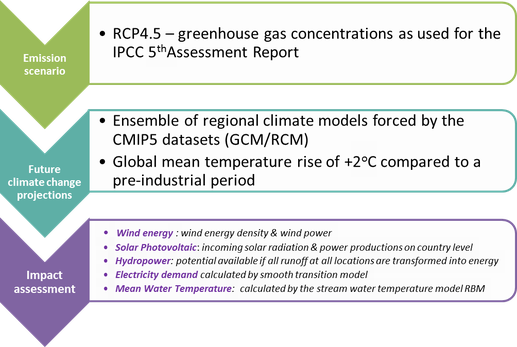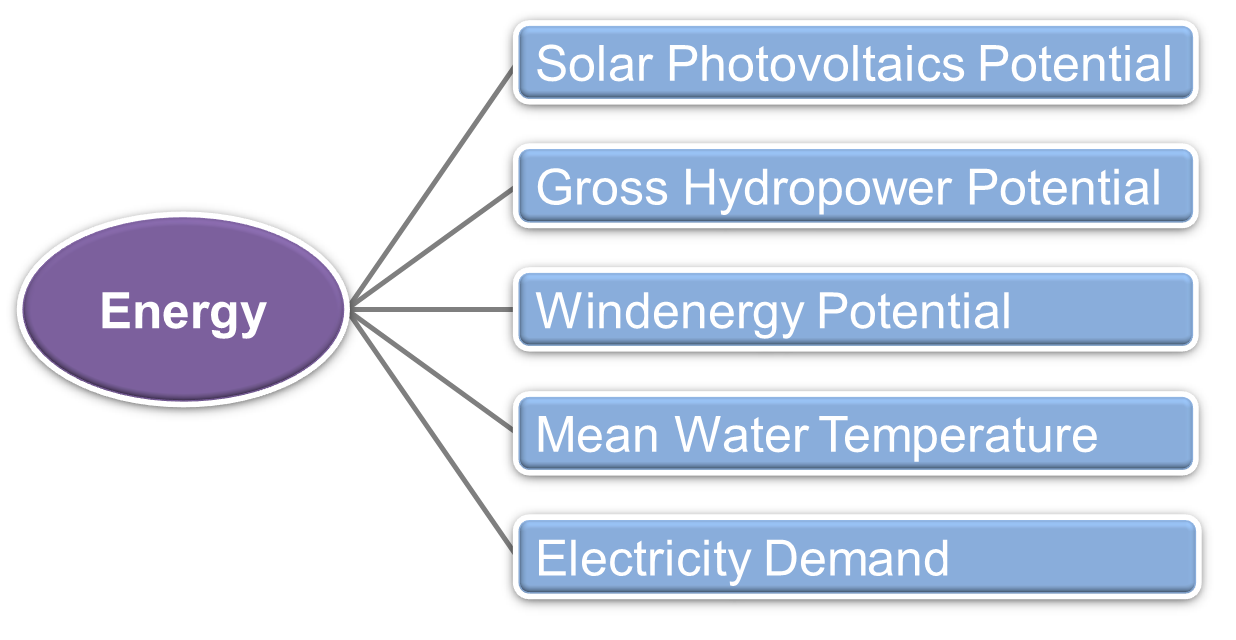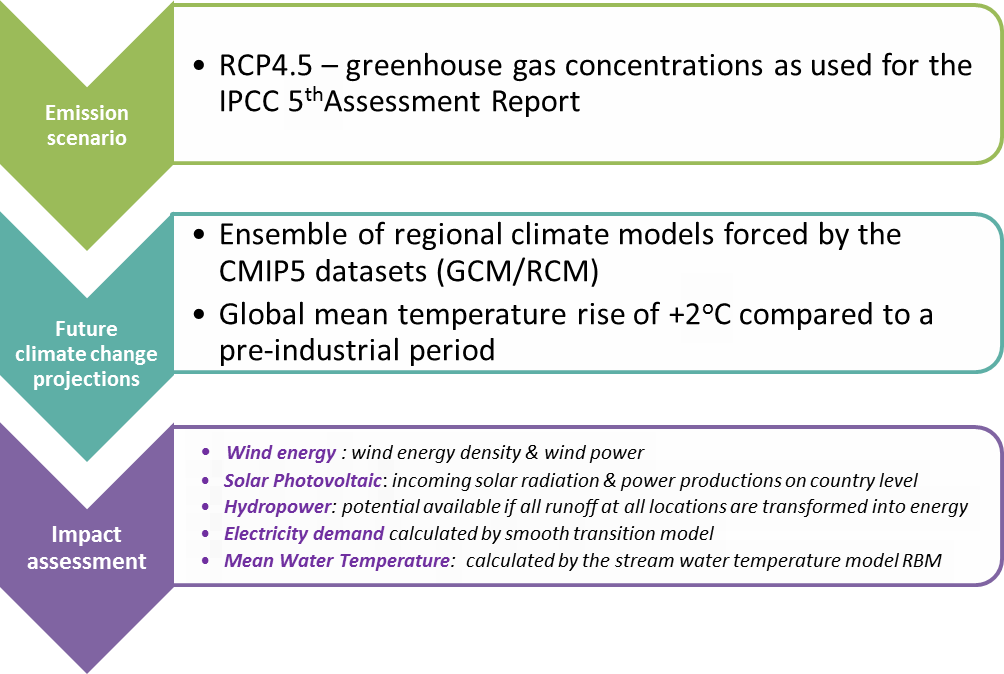Energy - Overview
1. Why is it important to consider climate change impact for the energy sector?
Climate change might impact both future energy supply and demand. Regarding the energy supply, direct and indirect climate change effects can be distinguished.
The direct effects on energy supply are mostly related to changes in renewable energy potentials. Therefore, the IMPACT2C community analysed changes in the solar photovoltaic potential, the wind energy potential and the gross hydropower potential under a 2°C global warming scenario.
The overview of all topics within this story and the methodological pathway applied to estimate the impact on the energy sector are presented in the Figures method chain and Energy topic tree.
The effects of +2°C global warming on the wind power and on the solar photovoltaic sectors have been assessed both in terms of power potential and in terms of power production. The effects of +2°C global warming on the hydropower sector have been assessed using the gross hydropower potential quantity.
Indirect effects of climate change on energy supply are based on changes in environmental conditions which are influencing the energy production potentials. As an example, inland water temperature was analysed to assess the usability of cooling water for thermal power plants. In this case, the VIC hydrological model has been used.
A warmer world might also change the demand for energy due to a larger cooling demand in summer or less heating in winter. IMPACT2C shows the potential evolution of electrical energy demand under a +2°C global warming as the relation between national mean population-weighted temperature and national electricity consumption.


2.What are the key findings?
Different sectors of energy production are projected to be affected differently under 2°C global warming. Some energy sources are projected to be only slightly or not at all affected by climate change. For example, the wind energy potential changes are projected to be less than 5% and the photovoltaic potential changes are projected to decrease by about 5 to 10% for most northeastern Europe. This development is expected for most of Europe. Other energy sources are affected more strongly and the results might vary for different regions in Europe. For example, the gross hydropower potential is projected to increase in northern and northeastern parts of Europe by about 10 to 20% while it is projected to decrease in southern European countries, such as Croatia by as much as 20%.
The mean water temperatures are projected to increase almost all across Europe by more than 1°C in the annual mean. In combination with projected decreasing river discharge, this reduces the potential for use as cooling water and thus also thermoelectric power production.
Furthermore, the electricity demand due to heating and cooling is projected to decrease in most countries, except for Italy, where the net energy demand is projected to increase.

